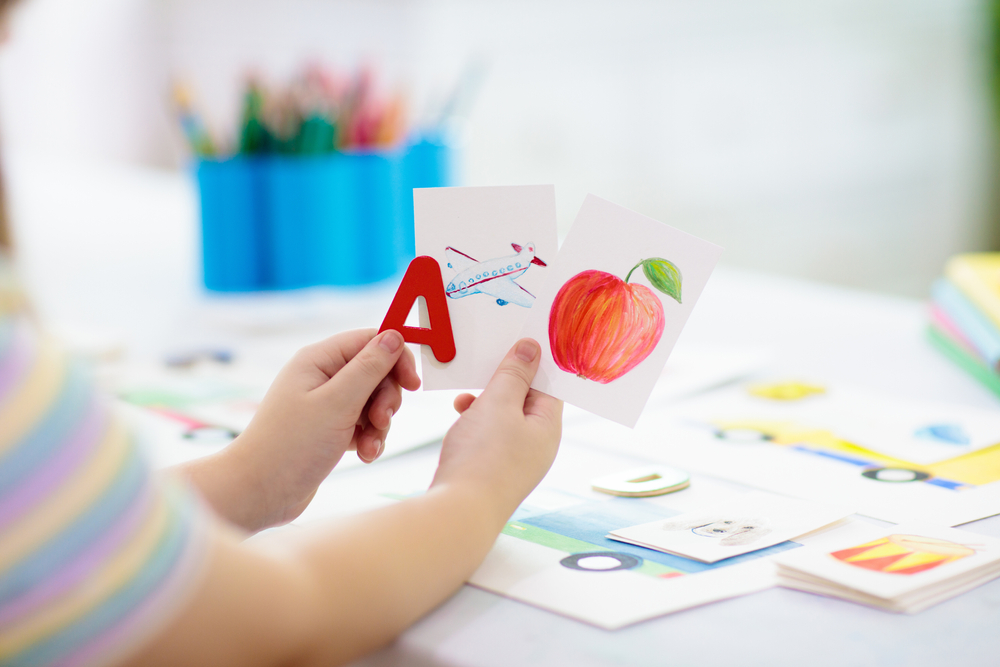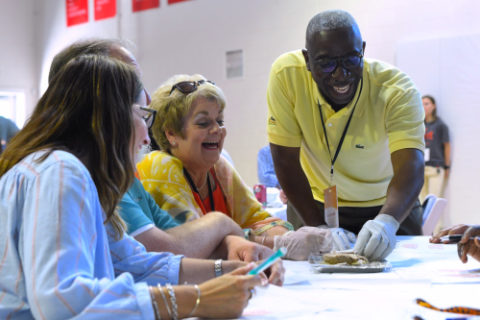While the ultimate goal of reading is what we do with the information and ideas that we take in through the written word. It is widely agreed that reading comprehension itself is the product of both word recognition and linguistic comprehension (simple view of reading, Gough & Tunmer, 1986). Phonological awareness is purely auditory and verbal, preceding any work a young mind begins toward the interpretation of visual symbols. As such, it belongs squarely within the domain of linguistic comprehension along with articulation, pragmatic speech, dialect, and spoken syntax. We will explore this important reading pillar of instruction in this fourth article of the Reading Unraveled series endeavoring to unpack the factors that impact reading outcomes in response to real questions asked by teachers.
Question 4
Why does phonological awareness matter? And what exactly can I do in my classroom to build these skills with my students?
The short answer is that phonological awareness is essential for reading because written words correspond to spoken words. Readers must have awareness of the speech sounds that letters and letter combinations represent in order to move from a printed word to a spoken word (reading), or a spoken word to a written word (spelling) (Moats, 2010).
In our first article of this series, the number one response to the question, “why are my ninth graders (or any grade) not understanding what they read as well as I would expect them to?” was “limitations in phonological awareness is by far the greatest predictor of reading challenges with at least 80 percent of all poor readers estimated to demonstrate a weakness in phonological awareness and/or phonological memory. Readers with phonological processing weaknesses also tend to be the poorest spellers (Cassar, et.al. 2005).”
It matters!
In its essence, writing is speech made visible. In an alphabetic language, it is critical that you consciously hear, connect, and speak the distinct sounds of your language in order to then interpret the collection of sounds that are represented by a series of graphemes to make a word, sentence, passage, or book. I think about this through the analogy of a forest. Some of us are innately drawn to the details of the trees, some to the intricate individuality and interweaving of fungal life, and some embrace the forest as a whole, breathing in the fullness of it all. Each of these holons, – to use a term I heard from Tracey Tokuhama-Espinosa, PhD., instructor at Harvard University Extension School – is completely valid, and none are more or less important than the other. However, as educators, knowing the holon through which our students are accessing the world of reading is enormously helpful. Especially in an area like phonological awareness, which many of us take for granted as a natural part of language acquisition from birth.
In my analogy, a heard word as a whole is a tree, and the phonemes that collect to make the word are like the leaves, bark, reticulate vein networks, and root structures that together form the tree as a whole. For many young brains, the details of the smaller holons in a word seem unremarkable and their focus lands entirely at the level of the whole word as one nuanced sound. We should never take for granted that the children we serve are attending to the details of the individual phonemes within words. In Fact, in his 2017 book “The Reading mind: A Cognitive Approach to Understanding How the Mind Reads”, Dan Willingham, PhD., tells us that “we are not born with the ability to hear individual speech sounds.” Making these audible for our learners is the work of the teacher of phonological awareness.
Before I list some useful and fun ways to bring our students’ attention to the phonemes within words, I need to clarify the relationship between phonological awareness and phonemic awareness, which are often confused as the same thing.
Phonemic awareness is only one piece of the phonological battery of skills. Phonological awareness includes the concept of spoken word, syllabication, and onset-rime, as well as, phonemic awareness and manipulation. Our work is to expose our learners to each of these linguistic holons in ways that skillfully lead to “aha” moments in the minds of our young learners. The good news is that research shows this can be achieved with very reasonable time dedication over a finite period of time, perhaps due to the conceptual breakthrough nature of bringing awareness to something. There is no need to embark on a labored and repetitive approach across years. Keep it fun, and target specific skills using spaced practice to avoid lowering learner interest, which always starts out high for this work.
Possible Activities to Enjoy with Your Learners
Concept of word
Place square or circle carpet pieces on the floor to form a path. Say a sentence out loud (I tap my leg as I say each word as a gesture cue). Have the learner repeat the sentence and explain that they will jump to the next carpet piece every time they say a word. When they say the last word, they stop on that piece, look back and count up the mats (including the one they’re on) to tell you how many words were in the sentence. You can make several carpet paths to allow multiple learners to do the task at the same time. Coach individuals who mistake syllables for words.
Syllabication
Tap, stomp, or clap syllables starting with a learner’s name, extending that to their classmates’ names, and then to familiar multi and single syllable words. Just as you’ve been doing for years. Body position can also help the separation with a child turning 180 or 90 degrees before saying the next part of the word out loud.
Rhyme
Create fun couplets that could be ended using familiar rhyming words and have your learners play the “completing the rhyme” game when lining up, waiting for carpool to begin, or just starting the day together. There are endless moments across a school day when this could be embedded and remain fun.
Onset-rime
Model saying a word and then splitting apart the beginning sound and the remaining sounds using several different words. I do this standing and use gestures to emphasize the initial sound and the remainder of the word. I always make gestures match the way they would actually eventually write – left to right from their perspective.
Specific Phonemes
Eye spy (ear hear) with words that begin with /b/. Each child who comes up with a word says the beginning sound and then the full word: /b/ bat. Reverse engineer this by giving a word and asking for the beginning sound. It’s so simple, and fun to do as an energizer during a long lesson. Use a similar strategy for the ending sounds. Note: Young learners find these more challenging to distinguish and will need modeling for a while before they become fluent with the end sound identification.
Moving Parts Around
There is no end of fun when practicing this skill. Young learners are delighted when words change into something else and they perceive the change of meaning carried with that process. Replacing beginning, ending, and even vowel sounds in the middle becomes a joyful moment in the day when you play Find the ___ game; for example, find the mat, but replace /m/ with /b/.
Building the skills of phonological awareness truly is fun for the learner and for the adults engaging in wordplay with them. It is not hard, but it does need to be intentional, with no assumptions about a child’s level of awareness of the small details within words. Formative assessment for these specific skills is the key to discover what each child can and cannot yet distinguish as a listener and speaker. Once you know what is missing, the remedy is fun and uncomplicated. Enjoy yourself and know that taking care of these pre-reading skills will set your learners up to reach their full capacity as literate people.
More Resources
Milankov V, et. al. (2021) Phonological Awareness as the Foundation of Reading Acquisition in Students Reading in Transparent Orthography. Int J Environ Res Public Health.
Moats, L. C. (2010). Speech to print: Language essentials for teachers. Baltimore: Paul H. Brookes Pub.
Willingham, D. T. (2017). The Reading Mind: A Cognitive Approach to Understanding How the Mind Reads. United Kingdom: Wiley.
Zgonc, Y. (2010). Phonological Awareness: assessment tools and strategies. United States of America: Stenhouse.
Sites:
Phonological Awareness by the National Center on Improving Literacy
Phoneme vs. Phonological Awareness by the Reading League
What is Phonological Awareness? by Understood




